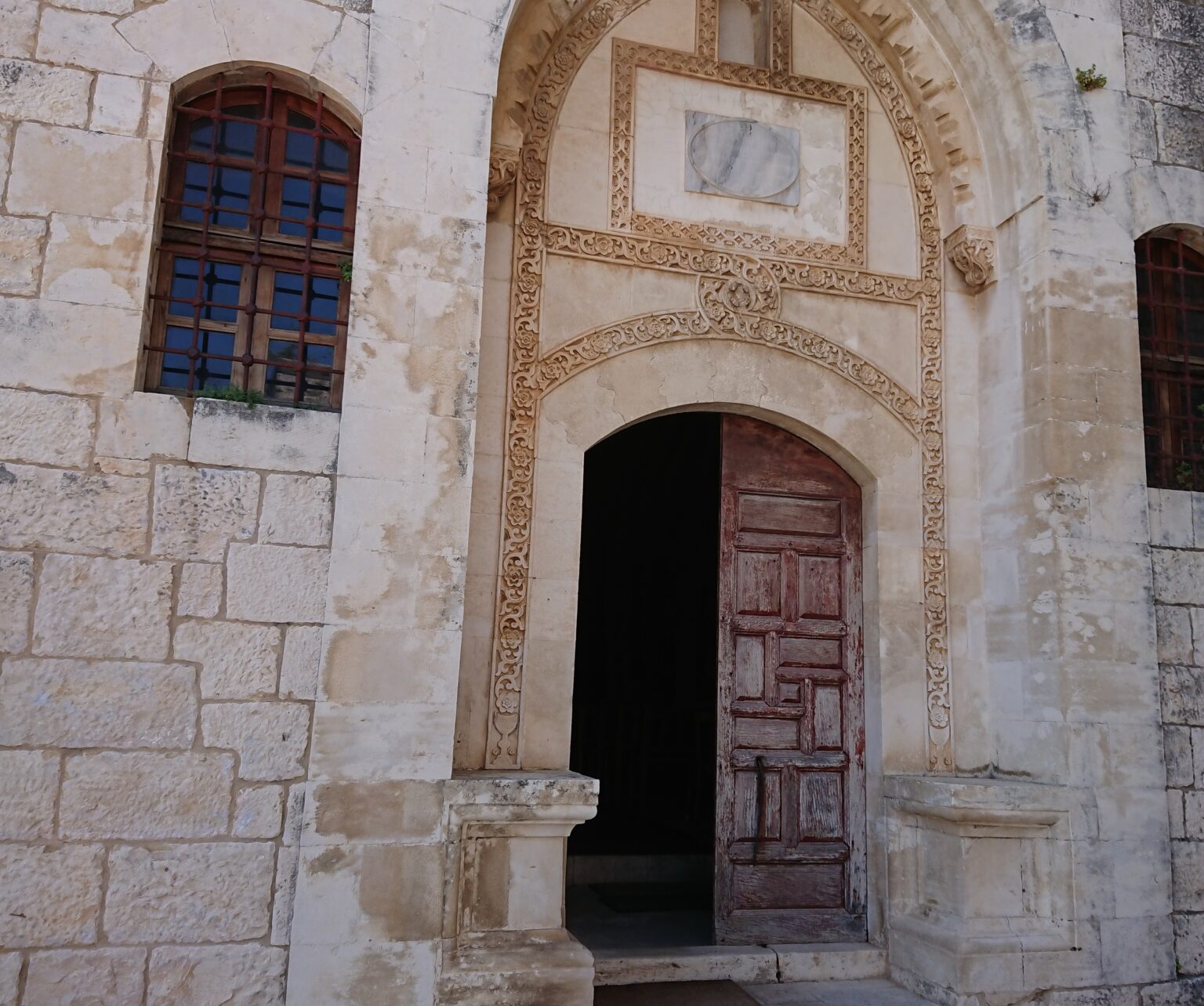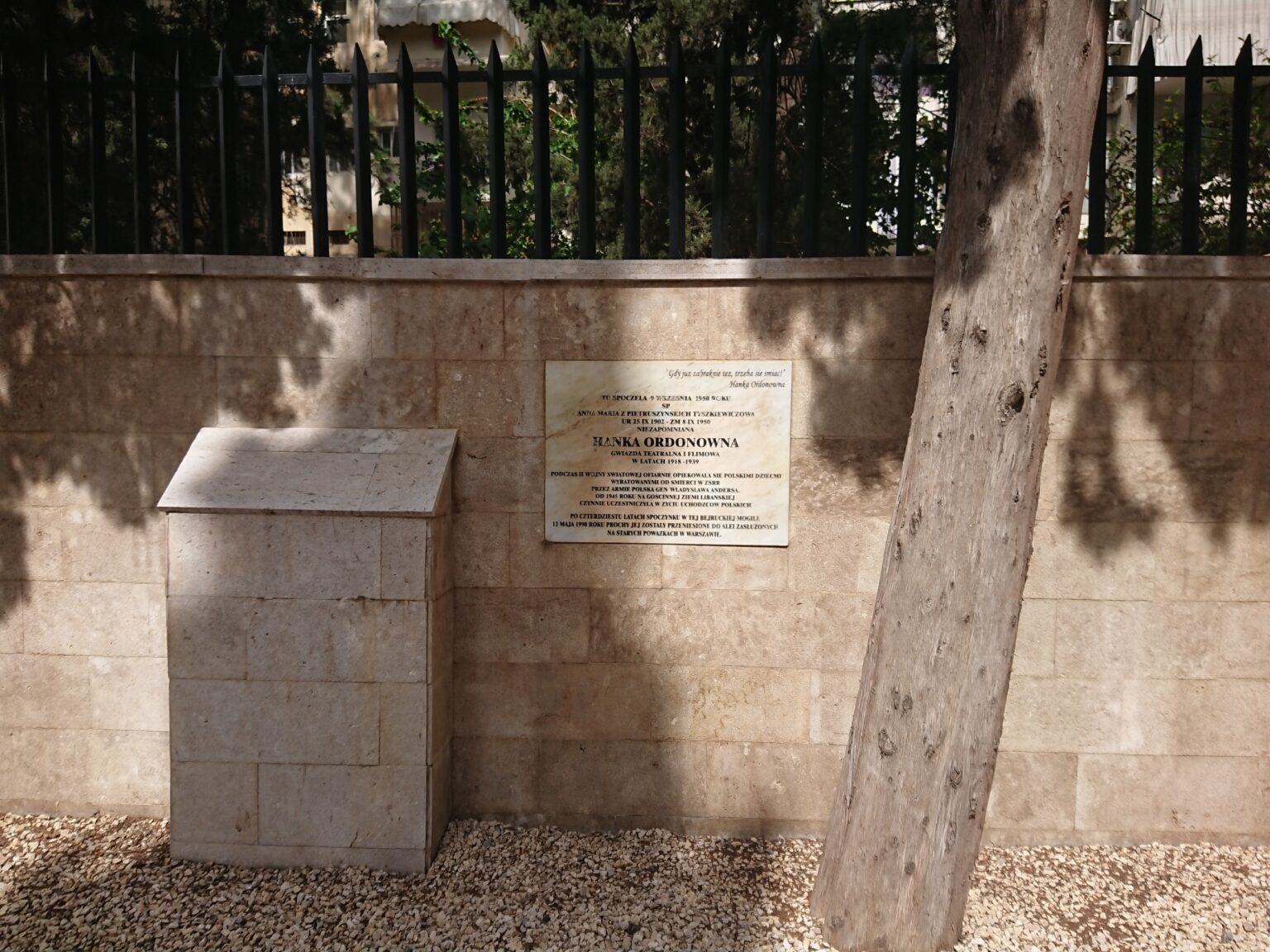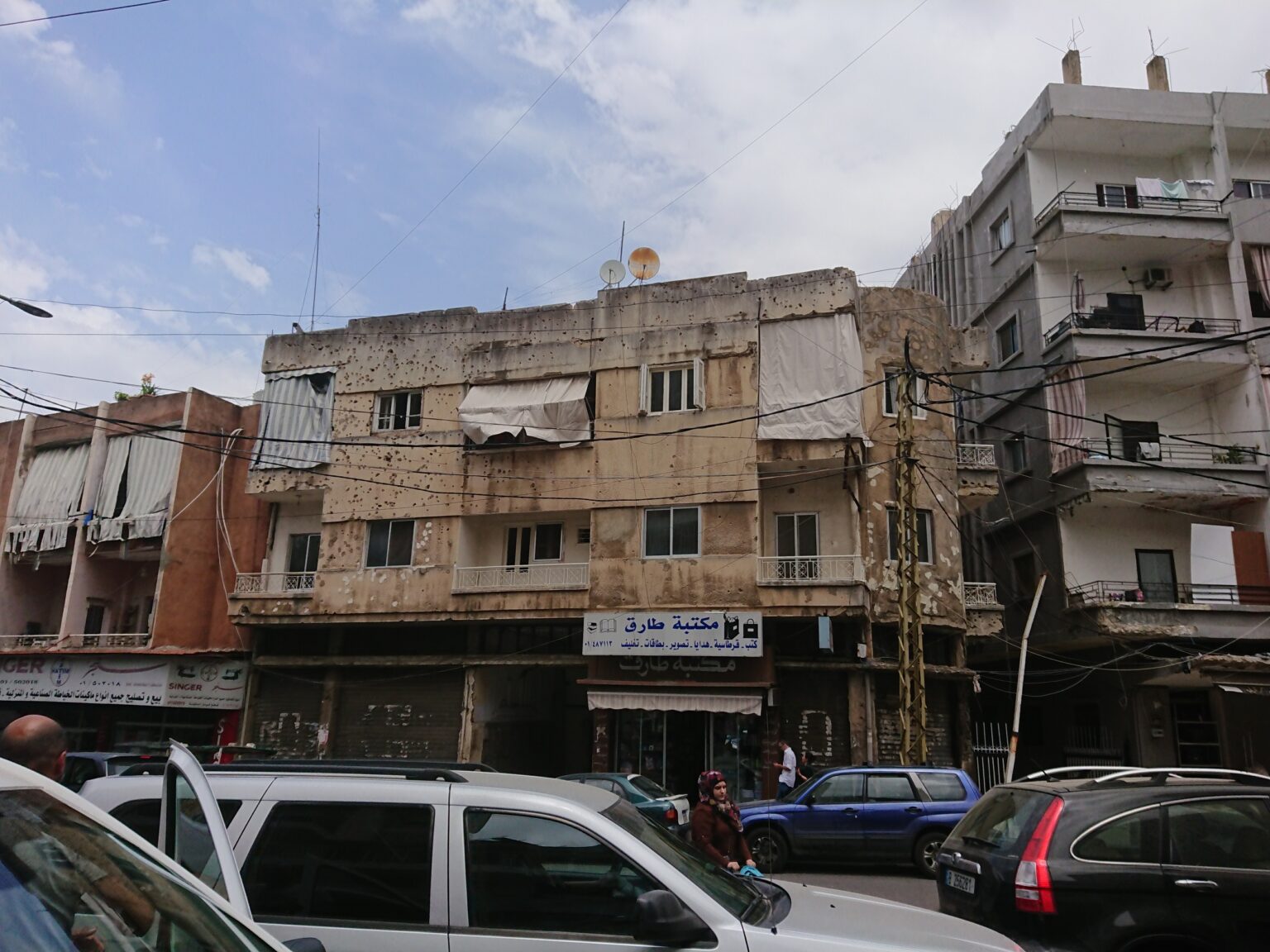The serpentine roads lead uphill. I have the best experts on Lebanon as travelling companions. Kazimierz Gajowy, Adam Rosłoniec and Aleksandra Smejda-Rosłoniec from the Fenicja Foundation are with me. It is a humanitarian organization supporting those in need in the Middle East. The three are linked not only by their desire to help but also by their love for Lebanon. Adam is an avid historian. On the way to the mountain monastery to which we are heading, he tells the story of the exodus of Poles who reached Lebanon during World War II. I will remember his words later when I’ll visit the Polish War Cemetery in the Palestinian district of Beirut, Sabra-Shatila.
“Fenicja, the name of the foundation, pays homage to all the historical cultures that have passed through Lebanon. The Fenicja Foundation is a place where we can all meet. Just like St. Sharbel, who invites everyone, not only Christians, but also Muslims and Druzes,”
Kazimierz Gajowy tells me.
The Foundation deals with – as I have already mentioned – humanitarian aid. “We want to help those in need. And there are people in need in Lebanon because, despite the beauty of this land, they are in a difficult situation. We help not only in Lebanon but throughout the Middle East,” adds Kazimierz. There will come a time to write about this as well.
But let’s leave that for later. Our first destination is a place associated with our poet. It is the monastery in Ghazir where Juliusz Słowacki stayed and inspired by the magnificence of the Lebanese land, nature and mysticism, wrote his – as Cyprian Kamil Norwid claimed – the most outstanding poem. The sand-coloured monastery, quite typical to the Middle East, glistens in the sun. On one of the walls, there is a plaque commemorating the Polish poet. The words on the memorial plaque were written in Polish, French and Arabic. The monastery is officially closed to visitors but one of the priests, hearing that we speak Polish, invites us inside. From the beautiful courtyard, we go to the only cell that is open. Here we find memorabilia of the Polish National Bard and his portrait.
While climbing some of the numerous stairs hidden in the vicinity of the monastery, we can reach a place from which there is a panorama of the mountains and the coast. The view is breathtaking. Only Almighty God could create such a beautiful painting. Juliusz Słowacki’s attitude towards the Church was rather frigid, delicately speaking. Only during his mystical Christian journey, following the footsteps of saints in the Armenian monastery, he could draw inspiration, like cold water from a mountain well. Who painted it? What is this panorama? I close my eyes. I imagine that I am a painter, with a blank canvas in front of me. I open my eyes. I see the painting. At the bottom, in the lower part of the frame, there are beautiful blooming flowers. At the top of the canvas where the majestic mountains rise, we can find pleasant coolness. On the sides of the painting (depending on which side of the monastery we look at), there are beaches and ports, where the Middle Eastern sun is heating lazily. Words come to mind voluntarily: show me another country in the world where you have everything, every beauty of nature – the beach and the mountains – so close each other. What kind of amalgamation is this? Lebanon is history, Lebanon is the civilizational heritage of the world, but even if you close all books about Lebanon, hide them deep and see this country only through the prism of nature – it would still be a magnet for poets. However, if we open these books, if we let this genie out of the bottle, release its history, and let the whole heritage go free, it creates a wonderful, magnetic mixture that attracts the Bards. For the most outstanding of them.
Poles know Juliusz Słowacki. But the paths of the outstanding Polish poet intersected in Lebanon with the trails of another great of our compatriots, who were forgotten over the banks of Vistula. Father Maksymilian Stanisław Ryłło was a Jesuit, a traveller and an orientalist. On behalf of the Holy See, Father Ryłło investigated the possibility of entering into a union with the eastern variations of Christianity and founding a university. He befriended Słowacki and took good care of him. Juliusz Słowacki reportedly confessed to him all night long. And if you confess until dawn, it’s only in Lebanon.
Getting to know Polishness in Lebanon is the goal of my journey. I have the unique opportunity to ask the Polish ambassador in Beirut, Przemysław Niesiołowski, about our heritage. He is a diplomat with extensive experience in challenging missions. He was in West Africa, where, like in the Middle East, numerous armed conflicts erupted.
“It is important to us that the Polish embassy organizes meetings and talks with Poles living in the area. Of course, there are not many of them, but they do a very important job. They cultivate Polishness,”
says the Polish ambassador.
“We want the Lebanese to get to know Polish music, film and literature. Lebanon is in a difficult economic and political situation. Ordinary Lebanese may not know much about Poland, but they are learning more and more. We are trying to reach their consciousness so they understand that Poland is not exotic, that It’s closer than they think,”
he adds.
However, the activities of the Polish embassy are not limited to caring for the Polish past. Ambassador Niesołowski wants to deepen future Polish-Lebanese relations also in the economic area.
“We want to offer Lebanon what Poland can boast of. For Poles, Lebanon is mainly St. Sharbel. But we also want to open up to sectors other than pilgrimage tourism, which is of course important. We have a lot to offer to Lebanon in the field of modern technology and agriculture,”
he emphasizes.
The Christian part of Lebanon intrigues not only the followers of Christ from all over the world. Muslims also make pilgrimages to the „Lebanese Częstochowa” – Harissa. The sanctuary of Our Lady of Lebanon stands on a mountain peak over Jounieh. There is a monumental Maronite cathedral here, as well as the white statue of the Virgin Mary. Water calmly flows through the fountain, in the background you can hear a bilingual holy mass in Arabic and Aramaic – the language used by Jesus of Nazareth. Like in Ghazir, the view of the Lebanese valleys and beaches makes you hold your breath for a moment. The hands fold for prayer themselves. It doesn’t matter if you are a Christian, a Shiite Muslim, a Sunni or a Druze. The lady of Lebanon embraces you like a mother. The Lebanese Marian cult reminds me of Poland. It is so close to our perception of faith. Leaving the sanctuaries, on the right-hand side, I see a statue of John Paul II with a commemorative plaque. For the Polish Pope, as well as for our other compatriots, Lebanon was a unique place. An essential place in the Christian part of Lebanon is the city of Byblos. It is a historical name. The modern one – Jubajl – sounds more Arabic. I use the hystorical one nevertheless. Why?
“This is the cradle of civilization. The cradle of culture and writing. The alphabet comes from here. We are in Byblos. The name Bible, Library, it all comes from this earth,”
Kazimierz explains.
The most famous Lebanese saint is St. Charbel (Sharbel Mahklouf). The hermitage in Annaya where he ministered is today a place of pilgrimage. St. Sharbel is famous for his healing powers. When Juliusz Słowacki visited Lebanon, the future saint was still a child. After the death of the monk, a glow appeared in the sky, and a liquid leaked from his body, which was considered a relic.
“I came here for the first time and saw Muslim women in the procession of St. Sharbela. When I see Muslim women in Christian areas when I see young Muslim women with great joy run up to a Polish priest asking if they can take pictures with him – I reflect on how open and tolerant this place is! We Catholics need Lebanon very much. To help us see what Christianity truly is. Here you know what you believe in. Here you know the dogmas of faith. The Maronites show what it means to be a true Catholic. Maronites have a real relationship with Christ. Lebanon and Poland have fantastic saints,”
Aleksandra says.
She has an exquisite knowledge of Lebanon. I ask her why she chose this place, although it is also a rhetorical question. “It’s a fantastic country. Beautiful in terms of views. Great people, wonderful food. There is something in Lebanon that used to be in Poland. What have we lost,” she replies. The coexistence of so many cultures side by side is a phenomenon. “It is an extraordinary country. This country is very much needed today. Lebanon teaches tolerance. It shows how many religions live side by side,” Aleksandra stresses. Lebanon fascinated Adam in a similar manner. He points to the attitude of local residents towards Poles.
“A Lebanese is a friendly person who knows his country. When you are looking for a way, everyone will want to show it to you, people stop cars and say – follow us. They give up on the journey of their own to help you find your way,”
he adds.
At the Polish War Cemetery in Lebanon, not only military personnel was buried, but also civilians who, among others, were evacuated from the inhuman Soviet land to the Middle East with Anders’ army. But the fate of Polish vagabonds was different, and their paths led not only through Iran.
“After World War II, many Poles came to Lebanon. They were very famous here. Like, for example, Karol Szayer, the most outstanding architect, known for many buildings in Beirut. Hanna Ordonówna, a well-known Polish actress, also found refuge in Lebanon. There were many mixed Lebanese-Polish marriages. Lebanon helped Poland in difficult times of war, now Poles help Lebanon. It’s beautiful,”
Maya, a Lebanese Christian, explains to me.
And in fact, the two most recognizable Poles in Lebanon who were buried in Sabra are Hanka Ordonówna, a legendary pre-war actress and dancer (her body was exhumed and transported to Poland) and Karol Schayer, an architect with – as you can see – widely respected by Lebanese people for his achievements. And so one war epoch mixes with another. The Polish cemetery was destroyed in the course of the Lebanese civil war and fights with Israel. The location itself says volumes about the complicated Lebanese fate. Sabra and Shatila are two Palestinian refugee camps, today considered districts of the city. The main road leading to the Polish cemetery used to be the front line separating one armed militia from another. Lebanon is marked by wars and geopolitical scars, but despite this, people have not been broken.
“I have been through several wars here. However, it was never the case that people did not live to the full. The Lebanese, even during the worst shellings we have experienced, tried to enjoy life as much as they could. I return because even in the worst times we feel the fullness of life here. Because of the crisis, there was no food here. It was hard,”
Kazimierz says.




We drive through other districts of Beirut. We pass an abandoned unfinished skyscraper, which was called the sniper tower during the civil war, for the fact that sharpshooters set up there. You can see the apartments in the Christian quarter which were shot at. The walls are covered with bullet holes. However, the damage caused by the fighting pales in comparison to the damage that is still visible around Beirut’s port. On August 4th, 2020, there was an explosion in the capital’s port. It was probably caused by an accidental fire caught by the flammable chemicals left alone in one of the warehouses. While in Lebanon, I heard different stories about this. One person told me that a fighter jet was seen approaching Beirut Harbour. Regardless of the cause, which is de facto unexplained to this day, the scale of the explosion was shocking and dramatic. 300,000 people lost their homes as a result. Several thousand were killed or missing. Immediately after the explosion, firefighters and paramedics flew to Beirut with the Polish mission. Humanitarian aid was launched in Poland to ease the tormented Lebanese capital. Recordings of the explosion are terrifying to this day. Clouds of smoke forming the shape of a mushroom look like an aftermath of a nuclear strike. For a country like Lebanon that lived off imports, the destruction of port infrastructure is a tragedy. Especially given that even before the outbreak, the Lebanese economy was experiencing a collapse, protests were taking to the streets. For Lebanon, it was like a right hook punch that falls on a staggering boxer who had taken a flurry of punches earlier.
“We also run humanitarian aid projects. We paid tribute to the victims of the explosion in the port of Beirut. We tried to help those families who were most affected by the explosion. The blast strike and the shattered glass – hurt people. We helped them. We were there immediately after the explosion, so it was necessary to rescue its victims. People lost everything overnight. The Lebanese told us that we were the only organization not only talking but also acting. There were many organizations that set up tents in Beirut and shot videos, but they did not help. People were outraged,”
Adam says.
“We gave a disabled girl a computer she had lost in the explosion. This computer was very important to her. It was her window to the world. When she lost it, the disease got worse. She was in serious condition. Her smile when she got the computer was very endearing,”
she adds.
Repairing houses and rescuing the wounded is not the only help that is provided by Poles to tormented Lebanon.
“Poland has always been a support for Lebanon. Your help brings hope in Lebanon. This is a great opportunity, especially for the young generation of our compatriots. Aid from Poland generates workplaces,”
emphasizes Maya.
She refers to an interesting project of the Fenicja Foundation, which focuses on workplaces. There is a lot of humanitarian aid that does not activate its participants professionally – of course, there are situations where such aid is necessary. But it’s good if its not the only one. And it also provides added value for the entrepreneurship of the local community.
“As the Fenicja Foundation, we are running a very important two-year development project financed by the Polish Ministry of Foreign Affairs. We have completed its first stage. The project supports the market culture. In areas inhabited by Christians, there is a problem with this (which is characteristic of Muslims). Especially during the pandemic, there was a shortage of food. The pandemic has disrupted the supply chains. Explosion in the port, speculators, and middlemen. Food prices were very high. ‘Youth of Hope’ is our Lebanese partner. The project aims at organizing the market in a manner that allows decreasing food prices. The farmers can sell their crops directly. Young Lebanese have jobs because they organize markets. Shortening the path from producer to consumer allows people to survive. The most important thing, however, is that we engage 150 young Lebanese people who are happy to save people from hunger,”
Aleksandra says.
Paweł Rakowski, an expert and commentator of Radio Wnet, spent a lot of time in Lebanon. The words he told me will summarize this reportage the best.
“Lebanon is a country with 7,000 years of history and 18 religions. The biblical mountains with cedars enter the Mediterranean, and it is in these mountains and on the coast that the colourful history and current lush politics took place. From this country, you can see the entire Middle East. However, Lebanon cannot be understood. You have to experience it and enjoy its existence. It would be good if the Arab world became like Lebanon: traditional but also liberal, conservative but not afraid of modernity,”
he stressed.
